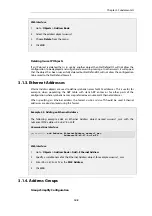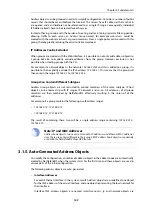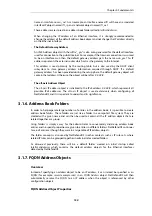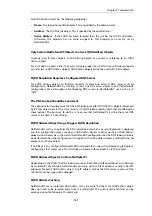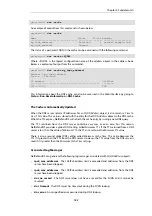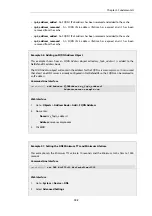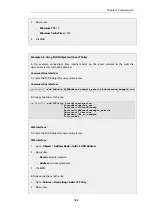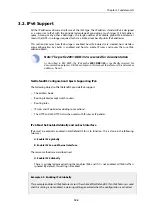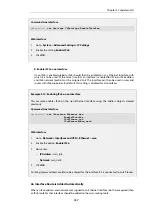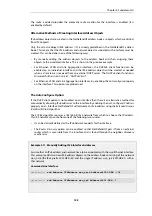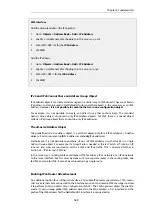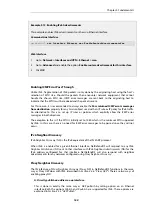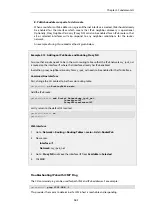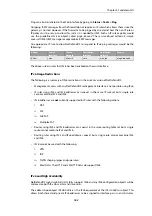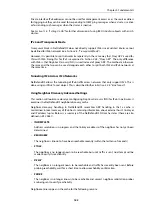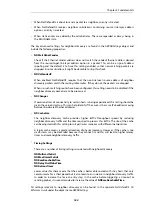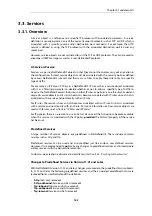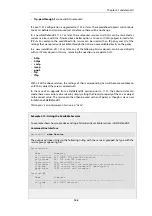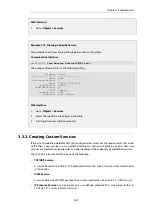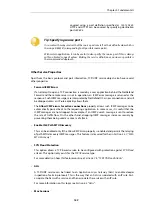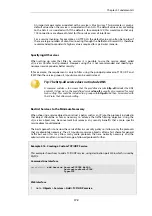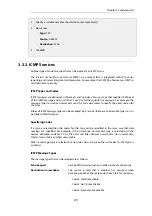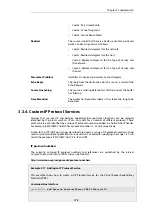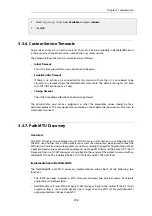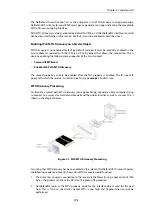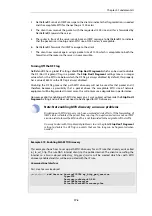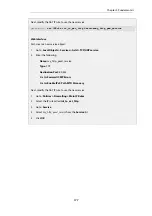
Ping can also be initiated in the Web Interface by going to: Status > Tools > Ping.
Outgoing ICMP messages from the firewall do not require an IP rule which allows them since the
gateway is trusted. However, if the firewall is to be pinged by an external host then an IP rule or
IP policy must be set up to allow this, just as it is needed for IPv4. Such an IP rule or policy would
use the predefined
Service
object called
ping6-inbound
The service object called
all_icmpv6
covers all IPv6 ICMP messages except mobile ICMP messages.
An appropriate IP rule to allow NetDefendOS to respond to IPv6 ping messages would be the
following:
Action
Source
Interface
Source
Network
Destination
Interface
Destination
Network
Service
Allow
wan
all-nets6
core
wan_ip6
ping6-inbound
The above rule assumes that IPv6 has been enabled on the
wan
interface.
IPv6 Usage Restrictions
The following is a summary of IPv6 restrictions in the current version of NetDefendOS:
•
Management access with any NetDefendOS management interface is not possible using IPv6.
•
IP rules using IPv4 and IPv6 addresses can coexist in the same IP rule set but a single rule
cannot combine IPv4 and IPv6.
•
IPv6 addresses are not currently supported in IP rules with the following actions:
i.
NAT
ii.
SAT
iii.
SLB SAT
iv.
Multiplex SAT
•
Routes using IPv4 and IPv6 addresses can coexist in the same routing table set but a single
route cannot combine IPv4 and IPv6.
•
Routing rules using IPv4 and IPv6 addresses coexist but a single rule cannot combine IPv4
and IPv6.
•
IPv6 cannot be used with the following:
i.
VPN.
ii.
IDP.
iii.
Traffic shaping (pipes and pipe rules).
iv.
Most ALGs. The HTTP and LW-HTTP ALGs do support IPv6.
IPv6 and High Availability
NetDefendOS
High Availability
(HA) fully supports IPv6 and any IPv6 configuration objects will be
mirrored on both the HA master and slave units.
The address book object
IP6 HA Address
is the IPv6 equivalent of the
IP4 HA Address
object. This
allows both shared and private IPv6 addresses to be assigned to interface pairs in an HA cluster.
Chapter 3: Fundamentals
162
Summary of Contents for NetDefendOS
Page 30: ...Figure 1 3 Packet Flow Schematic Part III Chapter 1 NetDefendOS Overview 30 ...
Page 32: ...Chapter 1 NetDefendOS Overview 32 ...
Page 144: ...Chapter 2 Management and Maintenance 144 ...
Page 284: ...Chapter 3 Fundamentals 284 ...
Page 392: ...Chapter 4 Routing 392 ...
Page 419: ... Host 2001 DB8 1 MAC 00 90 12 13 14 15 5 Click OK Chapter 5 DHCP Services 419 ...
Page 420: ...Chapter 5 DHCP Services 420 ...
Page 573: ...Chapter 6 Security Mechanisms 573 ...
Page 607: ...Chapter 7 Address Translation 607 ...
Page 666: ...Chapter 8 User Authentication 666 ...
Page 775: ...Chapter 9 VPN 775 ...
Page 819: ...Chapter 10 Traffic Management 819 ...
Page 842: ...Chapter 11 High Availability 842 ...
Page 866: ...Default Enabled Chapter 13 Advanced Settings 866 ...
Page 879: ...Chapter 13 Advanced Settings 879 ...

